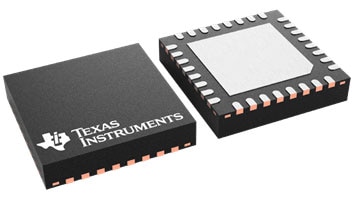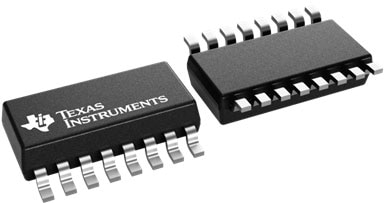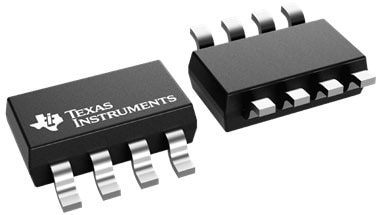TI Offers MCUs for Many Needs: How to Find the Right Option
Selecting the right microcontroller (MCU) is a crucial step in creating efficient, cost-effective, and scalable applications. Designers need to be able to pinpoint an option that balances processing power, power consumption, memory, analog integration, and peripheral support to match the application’s performance needs.
Texas Instruments (TI) offers a comprehensive selection of MCUs based on Arm® Cortex®-M0+ cores that feature low power consumption, low cost, and high efficiency. These 32-bit processors are well-suited for applications that require real-time performance without incurring significant computational overhead.
The Cortex-M0+ architecture offers a balanced foundation for a diverse range of embedded designs, from basic sensor nodes to advanced motor control units.
For designers, there are MCU options galore, spread across three series of TI Arm Cortex-M0+ microcontrollers. All provide varying levels of analog features, ranging from basic to very "rich." They can include integrated peripherals like 12-bit ADCs, operational amplifiers (op-amps), timers, communication interfaces (UART, I2C, SPI), and more—minimizing the need for external components. Designers can choose from multiple package types such as QFN and TSSOP to accommodate physical space constraints.
MSPM0 G-Series – This line of MCUs provides the highest level of analog feature integration and is designed for general-purpose applications, especially those requiring high-performance mixed-signal functionality. This series comes with up to 80 MHz CPU speed and up to 512 KB of flash, along with a 12-bit, 1 MSPS ADC with multiple channels, and with up to three integrated op-amps and various analog comparators.
The MSPM0G3107SRHBR (Figure 1) operates up to 80 MHz, and has 128 KB of flash memory and 32 KB of SRAM. It integrates two simultaneous sampling 12-bit, 4-MSPS ADCs with up to 111 external channels and a general-purpose amplifier (GPAMP). Additionally, it has enhanced communication with one Controller Area Network interface supporting CAN 2.0/3.0 and CAN-FD, 4 UARTs , two I²C, and two SPI interfaces. These features can accommodate diverse applications like motor control and industrial automation. Variants of this MCU come with 32 KB flash and 16 KB RAM or 64 KB flash and 32 KB RAM.
 Figure 1: Representative form factor of MSPM0G310x MCUs. (Image source: Texas Instruments)
Figure 1: Representative form factor of MSPM0G310x MCUs. (Image source: Texas Instruments)
MSPM0 L-Series – These provide a balance of low-power and analog capabilities that are optimized for applications like sensors and battery-operated devices. They offer clock speeds up to 32 MHz and flash memory from 8 KB to 256 KB, with a 12-bit ADC, analog comparators, and may include a single op-amp.
Within this series, the MSPM0L1306SRTRR (Figure 2) operates up to 32 MHz, and has 64 KB of flash memory and 4 KB of SRAM. It integrates a 12-bit, 1.68 MSPS ADC with up to 10 external channels, two zero-drift op-amps, and a high-speed comparator with an 8-bit reference DAC. It is well-suited for sensor and analog front-end applications where stability and offset correction over time are critical.
 Figure 2: The MSPM0L1306SRTRR MCU in a surface-mount 16-WFQFN package. (Image source: Texas Instruments)
Figure 2: The MSPM0L1306SRTRR MCU in a surface-mount 16-WFQFN package. (Image source: Texas Instruments)
MSPM0 C-Series – For entry-level and cost-sensitive applications that still need reliable performance with simple analog sensing, these MCUs operate up to 24 MHz and include up to 16 KB of flash with a basic 12-bit ADC.
For compact automotive applications, the M0C1103QDDFRQ1 (Figure 3) is an automotive-grade MCU that operates up to 24 MHz and includes 8 KB of flash memory and 1 KB of SRAM. It integrates a 12-bit ADC and supports communication interfaces such as LIN, I²C, SPI, and UART/USART.
 Figure 3: The surface-mount M0C1103QDDFRQ1 in TSOT-23-8 packaging. (Image source: Texas Instruments)
Figure 3: The surface-mount M0C1103QDDFRQ1 in TSOT-23-8 packaging. (Image source: Texas Instruments)
With over 130 different models, it's almost assured designers can find an MCU that suits their application, provided they can navigate through the specifications and capabilities of so many options.
Thankfully, TI provides some helpful tools to sort through the options, including an online parametric "Find your device" search tool to filter and compare Arm Cortex-M0+ MCUs based on parameters such as memory size, peripherals, and performance characteristics. There's also an MSPM0 MCUs Quick Reference Guide, specific product data sheets, and a wide range of evaluation boards available.
Conclusion
Texas Instruments Arm Cortex-M0+ MCUs represent a versatile range of solutions tailored to various applications, from low-power, sensor-based systems to cost-sensitive automotive designs. Designers can leverage TI's comprehensive tools and resources to identify the most suitable MCU for their specific needs to meet the diverse demands of modern electronic applications.

Have questions or comments? Continue the conversation on TechForum, DigiKey's online community and technical resource.
Visit TechForum











